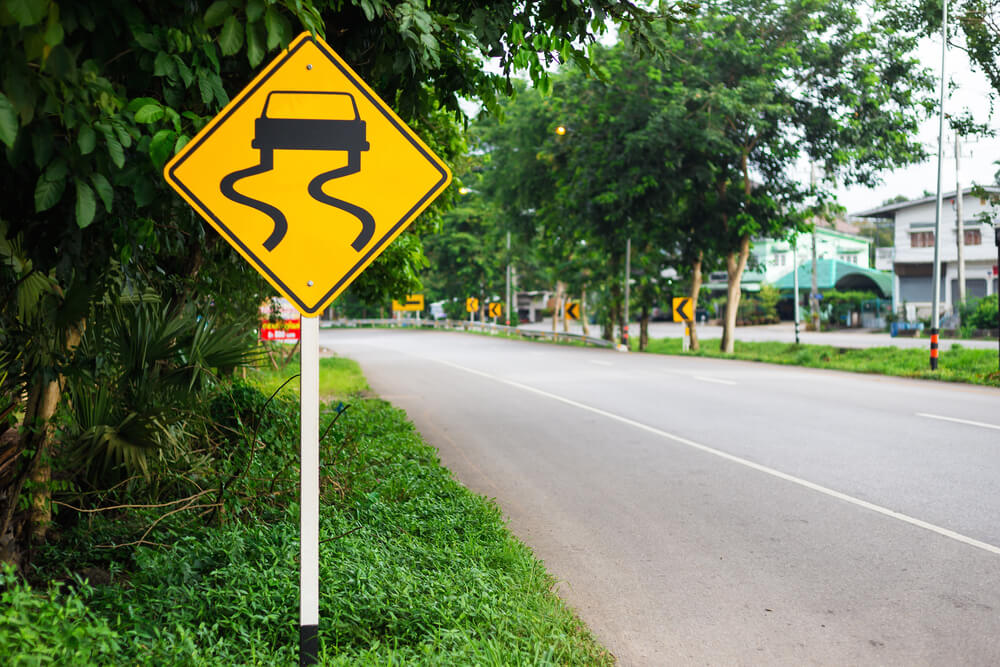5 defensive driving tips every driver need to know
Defensive driving tips that drivers definitely need to know in order to control the vehicle in emergency situations.

According to the experience of the “old” driver, the most important rule when the wheel is drifting is not to brake. So why? Because then the wheel will be blocked and the driver will not be able to control the car and only 2 ways to deal with wheel drift. Here, we would like to show you 5 defensive driving a car when traveling on slippery roads.
Defensive driving tips in dangerous places
Identify places where you must brake more often than before turning, intersections for pedestrians, and bus stops. Pay the most attention when you approach bridges, tunnels, overpass entrances and exits. You should keep the same speed there and start braking early.
In winter or rainy days, the distance of vehicles must be greater than in summer, or on sunny days. Especially in snowy areas, this distance should be greater than 2. However, you should not let too much distance because another vehicle might want to interfere. So, it may endanger all 3 vehicles.
When traveling on a slippery road, do not just look at the vehicle in front of you. The driver should look 3 or 4 vehicles in front of you. This way you can see the dangerous parts of the road ahead.

In the cold weather, do not push the clutch pedal with the brake pedal. In this case, the wheels may be blocked and the vehicle will drift.
For vehicles “YES” ABS anti-lock brakes: Anti-lock braking system is a very useful feature of all new vehicles. It help to neutralize the brake pedal on icy roads if you push too fast and too strong. Instead of sudden braking, the system causes the pedal to vibrate, so you can turn the wheel and put it in its original position.
For “NO” ABS vehicles: According to the driving instructions, the best way to brake when traveling on slippery distances is to use the foot brake but depress the brake short in combination with deceleration until the car is stop it.
3 common situations of car drifting
Skid: stabilized front axle, one rear slide, car revs more than expected.
Drifting wheel: stable rear wheel, front wheel slip, vehicle moves forward when turning.
Total instability: all four wheels slide, direction of movement is unpredictable.
How to regain control of the vehicle when the vehicle loses control
Do not depress the brake pedal, if your vehicle starts to drift
If the vehicle has a rear wheel drift, reverse the throttle and turn the wheels in the direction of the drift.
If the vehicle has a front wheel drift, pull up the gas pedal.
When the vehicle has stopped drifting, immediately turn the wheel to its original “forward” position, or a new drift wheel will begin.
Defensive driving tips and tricks on slippery roads
Here are 5 defensive driving techniques to help you adapt to driving on slippery roads safely:
– Track the road: Press the brake pedal many times to check on the roads. If you feel the car is stopped, the road is good, otherwise it means the road is slippery.
– Divided into 2: If you usually travel at speed 60 km/h, in winter, you should slow down to speed 30 km / h. This way, you’ll be sure you’ll have enough time to react if your car starts to drift.
– Road surface: On any road, try to drive with all 4 wheels on the same surface. If the wheels are on a mud puddle, or the slippery road can cause the vehicle to slip out of the way.
– Driving in high gear: On slippery roads, you should drive in high gear, this will help the car grip the road better.
– Escape from the slide: If your car is caught between a deep and slippery hole, steer the wheel to the sides to get out of the bog.
Subscribe for new driving tips!